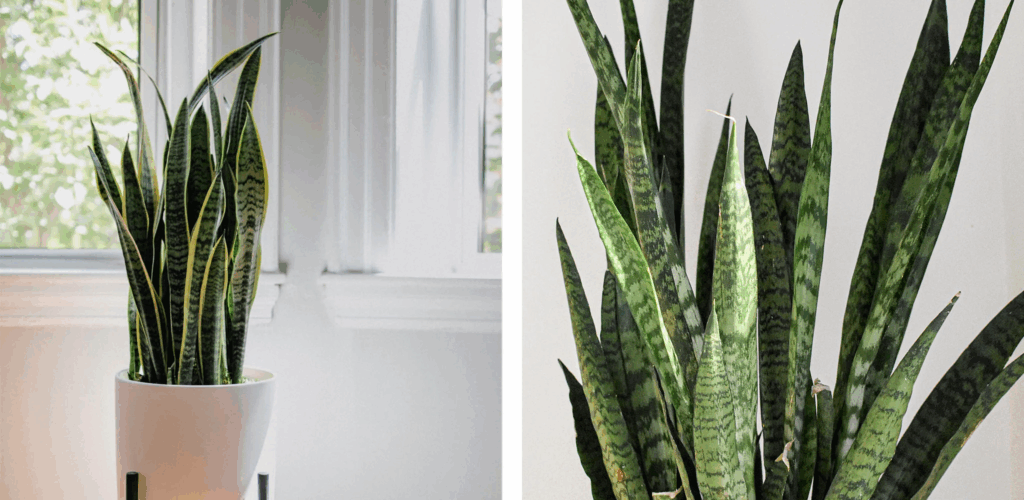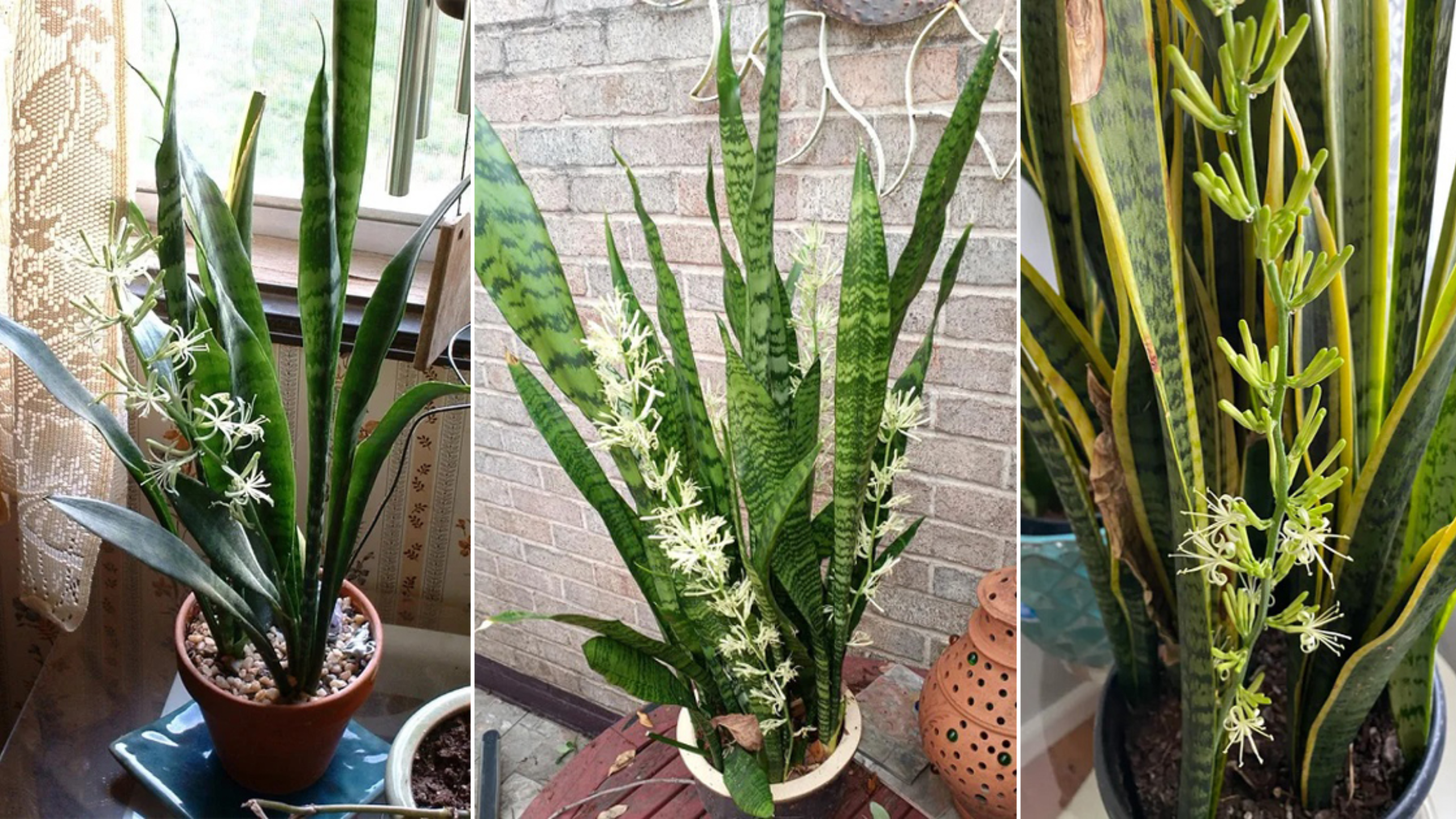Are you eager to see your snake plant (also called sansevieria or “língua de sogra”) bloom? You’re in the right place! While this resilient and easy-care plant is loved for its striking appearance and hardiness, many plant enthusiasts wonder how to encourage it to produce beautiful flowers. In this article, we’ll explore some lesser-known tricks that can help you transform your plant care routine and bring about that magical flowering moment.
Getting to Know the Snake Plant (Sansevieria)
The sansevieria, affectionately known as the snake plant or “língua de sogra,” is one of the most popular indoor plants worldwide. Its popularity stems from a perfect mix of visual appeal and robustness, making it suitable for even those with minimal gardening experience.
Appearance:
This plant features long, upright, pointed leaves that can range in color from vibrant green to muted gray-green. Many varieties showcase striking yellow or golden edges, giving them an elegant and modern look that complements various decor styles—from contemporary to minimalist.
Why It’s So Popular:
One major reason for the snake plant’s popularity is its incredible adaptability. It thrives in low light, requires minimal watering, and withstands temperature fluctuations. Such resilience makes it a favorite for busy households, offices, or anyone new to gardening.
The Surprise of Florets: Can Your Sansevieria Bloom?

You might not realize it, but your snake plant has the potential to produce flowers. While rare when grown indoors, flowering is totally achievable with the right conditions. When it blooms, the plant reveals exotic, often fragrant flowers that add an unexpected touch of beauty.
The flowers typically emerge from the base of the leaves, sometimes hidden behind the foliage for months. This subtle thing can be a delightful surprise for plant lovers, elevating the aesthetic and adding a sense of accomplishment to your care routine.
How to Encourage Your Snake Plant to Flower
Patience and the right environment are key. Many factors influence whether your snake plant will bloom, but with some adjustments, you can significantly boost its chances.
1. Provide Bright but Indirect Light
Although sansevieria is tolerant of low light, optimal blooming requires a brighter setting. Position your plant near a window with sheer curtains or in a well-lit room, avoiding direct sun that could scorch its leaves.
Why?
More light mimics natural, outdoor conditions, stimulating the plant’s flowering process. Think of it as giving the plant the right ‘nudge’ to flower—if it’s in a dim corner, it’s less likely.
2. Regulate Watering Carefully
Overwatering is one of the biggest mistakes made with snake plants. They thrive in dry soil, and too much water can rot the roots and prevent flowering.
Best Practice:
Water sparingly, roughly once every one to two weeks. Always check if the top inch of soil feels dry before watering again. Less frequent watering mimics natural arid conditions, encouraging the plant to go into flowering mode.
3. Optimize Temperature and Airflow
Your plant prefers temperatures between 15°C and 30°C. Protect it from cold drafts and temperatures below 10°C, which can stress or damage it.
Good air circulation is also beneficial—just avoid placing your snake plant in drafty or overly windy spots. A well-ventilated environment keeps the plant healthy and creates a better chance for flowering.
Soil and Fertilizer: How to Boost Blooming Potential
A well-draining soil mix is essential. Use a blend of regular potting soil, sand, and organic compost or humus to ensure oxygen reaches the roots and excess moisture drains away.
Fertilization Tips:
During active growth periods—spring and summer—apply a fertilizer high in phosphorus once a month. Phosphorus stimulates root and flower development. Be cautious not to overdo it, as excess fertilizer can harm the plant.
Patience Is a Virtue
It’s important to understand that flowering takes time. Many growers report waiting months, sometimes even up to two years, before seeing blooms. The key is consistency: keep up with the care routine, and don’t get discouraged if flowers don’t appear right away.
This patience is worthwhile. The rare and beautiful flowers add a special touch that makes caring for your snake plant even more rewarding.
The End Result: A Resilient and Enchanting Plant
By following these guidelines, you’ll help your snake plant become healthier and more likely to flower. Even in indoor settings, with enough light, proper watering, and patience, this hardy plant can surprise you with its delicate blossoms.
Every flower tells a story of care and perseverance. When your sansevieria finally blooms, it’s a moment of pride and joy that makes all the effort worthwhil


What’s up, yup this article is truly good and I have learned lot of things from it regarding blogging.
thanks.
For the reason that the admin of this web site is working, no doubt very shortly it will be well-known,
due to its feature contents.
I seriously love your blog.. Pleasant colors & theme.
Did you develop this site yourself? Please reply back as I’m wanting to create my
own personal website and would like to find out where you got this
from or just what the theme is called. Appreciate it!
Thank you a bunch for sharing this with all folks you actually realize what you are talking about!
Bookmarked. Kindly also talk over with my website =).
We may have a link trade arrangement among us
Small-sized bathrooms may instantly conjure images of cramped
floor spaces, messy scenes of
toiletries and bathroom essentials spread here and there, poor ventilation, lack of natural light,
and
so on. In many cases, such images are myths because compact bathrooms are not necessarily
challenging. All you need is a professional expert for bathroom remodelling in Gurgaon who can
transform your ideas into real-life scenarios.
Tips to Add Style & Functionality to Your Small Bathroom
Planned Remodelling is Crucial
The first tip for bathroom designs for small spaces is to start with planning.
Get a measuring tape to
measure the space and get an idea of the layout. Prioritize what you want – do you need to increase
the storage space, install more lights for increased lighting, or add modern aesthetics to the space?
With a clear and precise plan, there are fewer chances of confusion and discrepancies
arising later.
Way cool! Some extremely valid points! I appreciate you penning this article plus the rest of the site is
really good.
Эффективное программирование контроллеров Siemens, для начинающих.
Тонкости программирования контроллеров Siemens, секреты.
Как использовать TIA Portal для программирования, для улучшения навыков.
Типичные ошибки в программировании, изучите.
Проектирование автоматизации с контроллерами Siemens, советы.
Модели контроллеров Siemens и их особенности, для вашего проекта.
Лучшие языки программирования для контроллеров Siemens, для оптимизации.
Лучшие решения автоматизации с контроллерами Siemens, для производства.
Тренды в автоматизации с контроллерами Siemens, в ближайшее время.
Разработка пользовательских интерфейсов для контроллеров Siemens, основные шаги.
Настройка контроллера сименс [url=http://www.programmirovanie-kontroller.ru/#Настройка-контроллера-сименс]http://www.programmirovanie-kontroller.ru/[/url] .
Сайт Полтавы https://u-misti.poltava.ua новости сегодня. События в Полтаве и Полтавской области
Vibración de motor
Comercializamos máquinas para balanceo!
Somos fabricantes, construyendo en tres naciones simultáneamente: España, Argentina y Portugal.
✨Ofrecemos equipos altamente calificados y al ser fabricantes y no intermediarios, nuestras tarifas son más bajas que las del mercado.
Disponemos de distribución global a cualquier país, lea la descripción de nuestros equipos de equilibrio en nuestra página oficial.
El equipo de equilibrio es portátil, ligero, lo que le permite equilibrar cualquier rotor en diversos entornos laborales.
El dispositivo para equilibrio Balanset 1A representa el fruto de mucha labor constante y esfuerzo.
Siendo productores de este sistema innovador, tenemos el honor de cada unidad que sale de nuestras fábricas.
No solo es un producto, sino además una herramienta que hemos optimizado para resolver problemas críticos relacionados con desbalances en máquinas dinámicas.
Sabemos lo frustrante que puede ser enfrentar paradas inesperadas o costosas reparaciones.
Por eso creamos Balanset-1A enfocándonos en las demandas específicas de los profesionales del sector. ❤️
Distribuimos Balanset 1A con origen directo desde nuestras sedes en España , Argentina y Portugal , ofreciendo envíos veloces y seguros a cualquier parte del mundo.
Los agentes regionales están siempre disponibles para brindar soporte técnico personalizado y consultoría en el idioma local.
¡No somos solo una empresa, sino una comunidad profesional que está aquí para ayudarte!
El Balanceo de Componentes: Elemento Clave para un Desempeño Óptimo
¿ En algún momento te has dado cuenta de movimientos irregulares en una máquina? ¿O tal vez escuchaste ruidos anómalos? Muchas veces, el problema está en algo tan básico como una falta de simetría en un elemento móvil. Y créeme, ignorarlo puede costarte caro .
El equilibrado de piezas es un paso esencial en la construcción y conservación de maquinaria agrícola, ejes, volantes y elementos de motores eléctricos. Su objetivo es claro: impedir oscilaciones que, a la larga, puedan provocar desperfectos graves.
¿Por qué es tan importante equilibrar las piezas?
Imagina que tu coche tiene un neumático con peso desigual. Al acelerar, empiezan las sacudidas, el timón vibra y resulta incómodo circular así. En maquinaria industrial ocurre algo similar, pero con consecuencias considerablemente más serias:
Aumento del desgaste en soportes y baleros
Sobrecalentamiento de componentes
Riesgo de colapsos inesperados
Paradas no planificadas y costosas reparaciones
En resumen: si no se corrige a tiempo, una leve irregularidad puede transformarse en un problema grave .
Métodos de equilibrado: cuál elegir
No todos los casos son iguales. Dependiendo del tipo de pieza y su uso, se aplican distintas técnicas:
Equilibrado dinámico
Ideal para piezas que giran a alta velocidad, como rotores o ejes . Se realiza en máquinas especializadas que detectan el desequilibrio en dos o más planos . Es el método más exacto para asegurar un movimiento uniforme .
Equilibrado estático
Se usa principalmente en piezas como llantas, platos o poleas . Aquí solo se corrige el peso excesivo en una única dirección. Es ágil, práctico y efectivo para determinados sistemas.
Corrección del desequilibrio: cómo se hace
Taladrado selectivo: se perfora la región con exceso de masa
Colocación de contrapesos: por ejemplo, en llantas o aros de volantes
Ajuste de masas: típico en bielas y elementos estratégicos
Equipos profesionales para detectar y corregir vibraciones
Para hacer un diagnóstico certero, necesitas herramientas precisas. Hoy en día hay opciones disponibles y altamente productivas, por ejemplo :
✅ Balanset-1A — Tu aliado portátil para equilibrar y analizar vibraciones